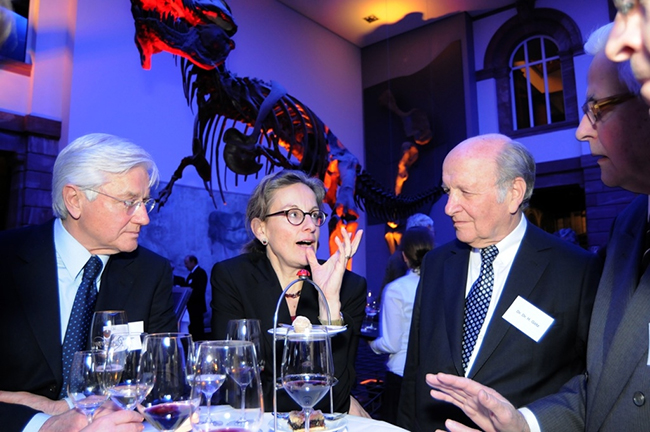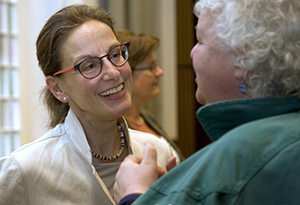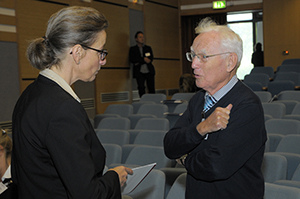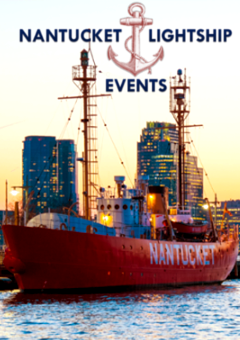MY NEW YORK STORY

By Ursula Staudinger
My husband and I moved to New York from Germany after I had been recruited as the founding director of the Columbia Aging Center and immediately felt at home. I lived for many years in Berlin, another great city, and honestly feel like an urban creature. But I also love nature. In its way, New York gives me both environments at once. I love my mornings of walking my rounds in Riverside Park, the westward view of the Hudson its spectacular sunsets, and biking along the Hudson River either up towards Westchester or down to Battery Park. And I very much enjoy walking down Broadway running errands or ending a day at Lincoln Center or the Metropolitan Museum of Art. You could live in the Met and never tire of it.
EASY ACCESS
So when people ask me where I want to grow old, I can’t think of a better place than New York. After three years in this beautifully green neighborhood bookended by two great parks, it’s no surprise to me why my neighborhood came in at number 2 in a recent ranking of livability. But it’s not just the parks that make it enjoyable. What makes it livable for people of all ages is the easy access to stores, and transportation, the walkability, the opportunities for civic and social engagement, for continuing education and most of all the potential for inclusion of all residents. Unfortunately, affordability of housing—one big factor that plays into livability—is not a term one associates these days with Manhattan or New York. We need to do a lot better on that so that everyone can reap the benefits of aging well while living in “the greatest city in the world” to quote Lin-Manuel Miranda’s Hamilton.
Living so close to Columbia University’s Morningside campus, you might think that my perspective might be skewed toward the younger. Swarms of undergraduates arrive at the end of each August! But the neighborhood is abundant with faculty of all nationalities and ages, and residents who’ve lived here and chosen to stay well into their older age. And taking the No. 1 train every workday up to the Medical Campus of Columbia University and to New York Presbyterian Hospital, where “Amazing Things are Happening,” it feels like taking a trip to the Caribbean as CUMC is embedded in a neighborhood of immigrants from the Dominican Republic. Where else in the world is it so quick and cheap to take that trip? This is what makes living in NYC on the West Side so exciting. Livability applies to old and young, and many different ethnic groups.

IMPROVE THE AGING PROCESS
Let’s not forget: New York is the core premise of the Age-Friendly City initiative of the World Health Organization. My colleague and associate director of the Columbia Aging Center, Ruth Finkelstein, was a principal architect of Age-friendly New York. And one of the primary research and policy topics we’re focused on together is to improve the contexts that we are in, be it our neighborhood or be it at work.
Through my research as a lifespan psychologist, I have come to understand that our aging process is not entirely set in stone at conception. Of course, our genetic makeup plays a significant role in how our aging will unfurl. But the context in which we age, and our behavior and attitudes influence the process as well. The conclusion I have drawn with many researchers in aging science is that aging is, in fact, modifiable. This means there are a large number of things we can do as individuals and as a society to improve the aging process so that we remain cognitively and physically fit, engaged, satisfied and fulfilled. People often have no idea how much their physical fitness can contribute to staying cognitively healthy. My research demonstrated that cardiovascular training and other types of physical activities are associated with an increase in the brain’s ability to quickly process new information. New Yorkers are blessed in that regard as physical activity is practically built into living here since most of us get around largely on foot. If you can pick up the pace, it’s great for your brain.
But again, what we do or not do—because we have to or because we want to—has significant influence over our development as human beings. And one thing is clear: we don’t stop developing at age 20! We continue to change throughout our lives. Contexts matter. The isolation that tends to come as we age and to wreak havoc with our health and well-being is in part a product of how we’ve conceived of our environments, our institutions, and societal structures. We need to rethink these so that we can all continue to develop and optimize our longer lives.

AN AGING SOCIETY
If we are going to be living lives that extend well into our 80s and 90s and perhaps beyond, don’t we want to continue to have opportunities to learn new skills? To work longer if we are able? Research shows how novelty, social connections and meaningful engagement—three of the things we get from education, work and volunteerism—help keep our brains, bodies, and souls healthy. Learning new tasks at work is particularly beneficial. No one wants to do the same thing for 20 and more years! But our notions about education need to change to build in the opportunity for learning across the lifespan. Here again, NYC is a champion. With its incredibly rich nexus of educational institutions, New York could be the perfect Petrie dish in which to study the benefits of an education at 40, 50, and 60 years old and beyond.
Which brings me back to Columbia University, where our Columbia Aging Center resides. It’s university-wide, interdisciplinary approach takes full advantage of Columbia’s deep bench of expertise—from the social sciences, the business school and engineering to biology and neurology—to understand and further healthy aging. As an incubator of ideas, the University offers the remarkable opportunity to convene a broad range of researchers. The Columbia Aging Center is currently funding diverse projects from topics like how hormones produced by bone change muscle function and thereby influence cognitive aging, or how curiosity contributes to longevity, to others like how to foster successful aging among lesbian and gay adults. In essence, my New York is not only a great place to grow old, but it’s also an excellent laboratory to study aging and gain better insight into how best to grow old.




